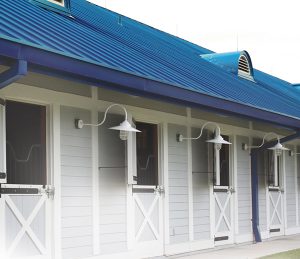paykwik al
online sportwetten
paykasa
paykwik
online sportwetten
paykasa
Basic Horse Care is More Than Basic
Click here to read the complete article
The road to the Congress and World Show is a long one, made only longer depending on how far you actually have to haul your horse to Ohio and Oklahoma. During the trip, you may make a stop for fuel and check your horse, but something just doesn’t seem quite right. Do you know how to listen for gut sounds, check a digital pulse, or take a rectal temperature? Because of the availability of show veterinarians and knowledge of horse trainers, it’s easy for horse owners to get complacent. As a result, many people don’t know how to perform simple, horse health, vital diagnostics.
Do you rely too much on others to keep your horse healthy?
What Are the Basics?
The best time to know your horse’s vitals is to know them before an issue arises. “It’s imperative to know your horse’s vitals when they are normal and relaxed,” says Bonnie Comerford, DVM, a veterinarian based in Ocala, Florida. “You need a resting rate, which means not prior to feeding, not while under tack or right after exercise, and not after he’s been out in the sun, thus raising his temperature.”
This means that if you need to take your horse’s vitals after he’s been exercised, it’s important to wait 20-30 minutes for recovery, because all levels will be elevated immediately after work. This is also helpful to get your horse used to you performing these actions and placing your hands in places where he may not be comfortable.
“It’s helpful if you take two weeks and perform vital sign checks on your horses around the same time each day, so you have a good idea of what’s normal for each horse,” she advises.
Write It Down
Basic health care of your horse is mostly good observation of his daily life: How does he react when it’s feeding time? How well does he eat? What is his manure like in his stall? How much water does he usually consume overnight? Taking the time to really observe and take notes in a notebook, that can be readily available in the barn or trailer, is a valuable tool for your horse’s care.

“Provide horse health information cards for each horse in your care to be filled out and laminated so they go along with the horse when traveling,” Dr. Comerford says. “If it’s your personal horse, providing this information to your trainer can help expedite any concerns or care.”
So what should you know when it comes to your horse’s health parameters?
Temperature:
Dr. Comerford recommends having at least one digital thermometer in the barn and one in the trailer, each with a long piece of twine tied to the end to prevent losing the thermometer. Another helpful preparation tip is to use lubrication, such as Vasoline or medical grade lubrication, to aid in insertion. Standing close to the horse’s hind end, with your hand resting on the hip, you will reach under the tail and insert the thermometer. Once you hear the beep of the thermometer [after two minutes], you can remove the instrument and note the temperature. Make sure you clean off and replace the cap to the thermometer before you put it away.
• Normal adult horse resting temperature: 99° – 101°F
• Normal foal resting temperature: 99.5° – 102°F











